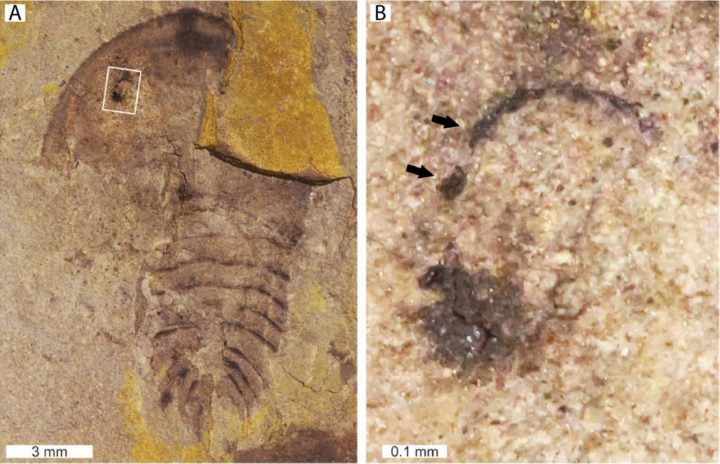Were the ancestors of horseshoe crabs really blind?
Published on 6th August 2019

Cyamocephalus loganensis specimen lacking definitive evidence of eyes © Javier Ortega-Hernández
Using unstudied fossils, University of New England (UNE) palaeontologist Dr Russell Bicknell and his team endeavoured to answer this question, with the results being published in the Zoological Journal of the Linnean Society of London.
The team from the Harvard University and New York State Museum examined a series of long-neglected fossils held in the latter. Comparing them with fossils from Australia, Bolivia, Canada, China, England, and the USA revealed that about 60% of fossil horseshoe crab species showed no evidence of eyes.
The lack of evidence of eyes on previous fossils collected in the 19th century has led to the general consensus that the ancestors of modern horseshoe crabs were, in fact, blind. This study verifies and supports the hypothesis by using a well-catalogued fossil collection to fill in the gaps in horseshoe crab evolution knowledge.
We effectively ground-truthed that assumption, and found that to a degree, these statements were correct. What those early investigators didn't have, and we did, was a more complete record of fossil horseshoe crabs.
By comparing fossils that are both temporally and geographically widespread, the researchers were able to gain a better understanding of horseshoe crab evolution.
Some of these fossil species likely lost sight as it had no real use to them, perhaps because they lived in low light environments… But the fact that modern day horseshoe crabs have eyes and vision, albeit limited, indicates that blind forms did not survive changes to their environment that made their lost sense valuable again.

Pseudoniscus roosevelti (NYSM 19112) displaying evidence of an eye. A, complete specimen. B, close-up of box in A. Note dark pigmentation of eye (black arrows) © Russell Bicknell.
Also referred to as ‘living fossils', horseshoe crabs have been around in some form for about 500 million years, making these marine arthropods more ancient than dinosaurs, and have survived five mass extinction events.
However, considering their long existence and robustness, Dr Bicknell is not convinced these ancient animals will survive the current wave of human-driven extinctions. The Chinese horseshoe crab is now listed on the IUCN Red List of Threatened Species, and Dr Bicknell is involved in continued research to have the iconic American horseshoe crab also classified as threatened. Currently American horseshoe crabs are harvested by pharmaceutical companies for their blue blood, which is used to test for bacterial contamination. Their blood is so valuable that it is worth roughly $15,000 per litre. Overharvesting in North America has led to a decline in crab populations, with roughly 10–30% not surviving the harvesting procedure. Equally worryingly is that the females that do recover often breed less than non-bled females.
It would be an indictment on humanity if this animal, which has persisted for 500 million years and basically outlived everything else, was finally made extinct by us.

© Wikimedia Commons/ Chris Howard
The full paper can be read here: New insights into the evolution of lateral compound eyes in Palaeozoic horseshoe crabs. Russell D. C. Bicknell, Lisa Amati and Javier Ortega-Hernández
